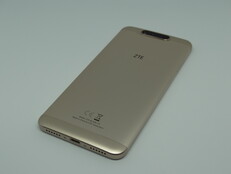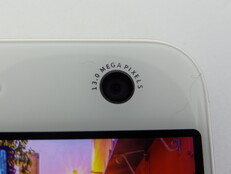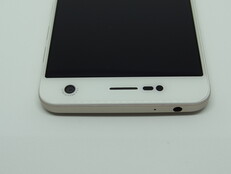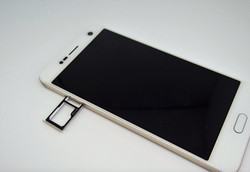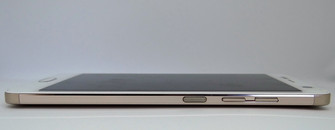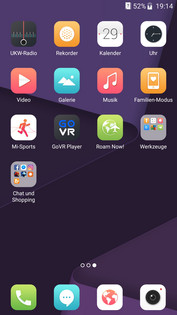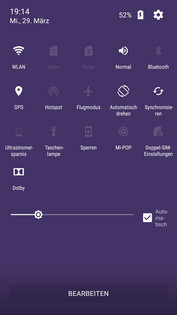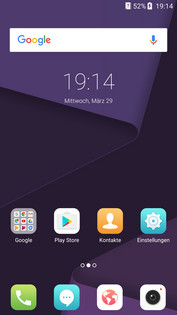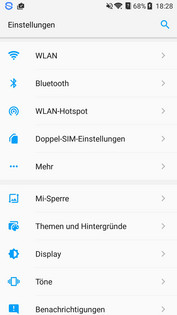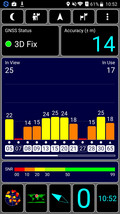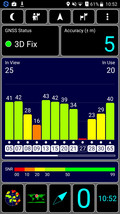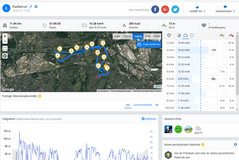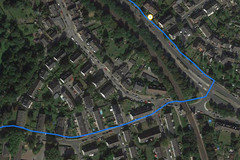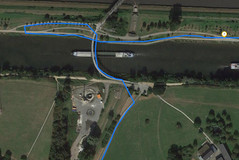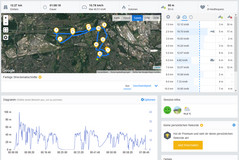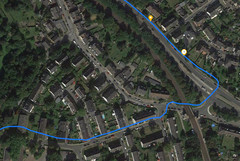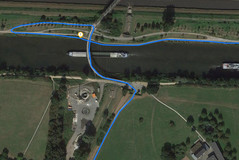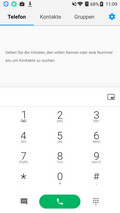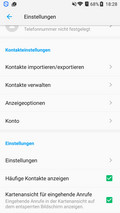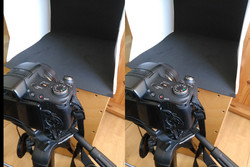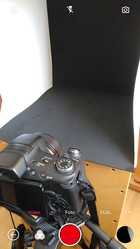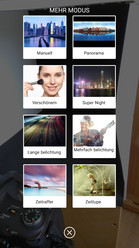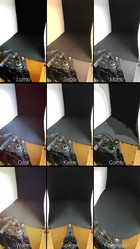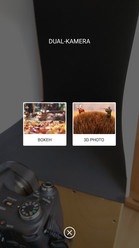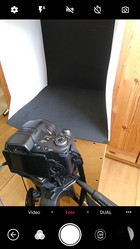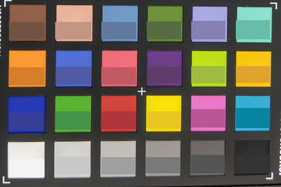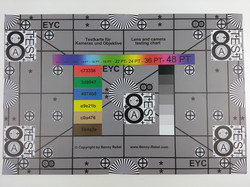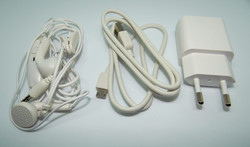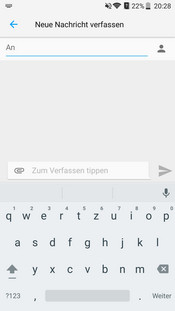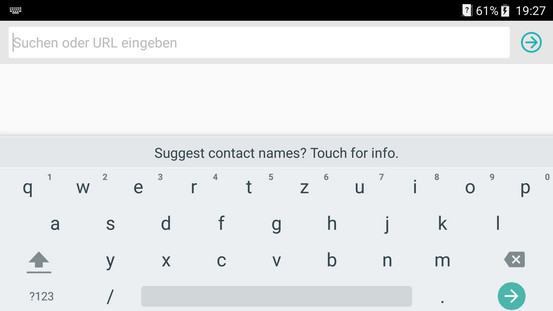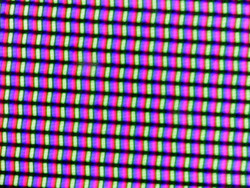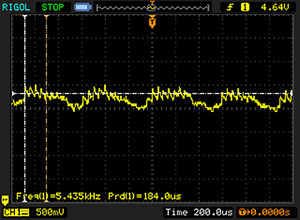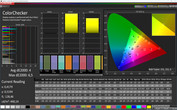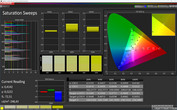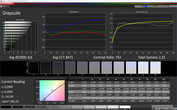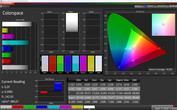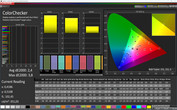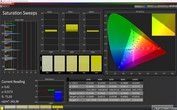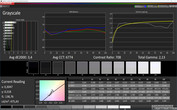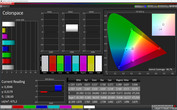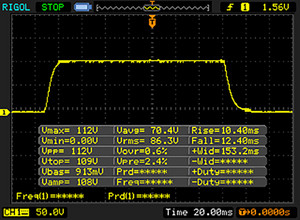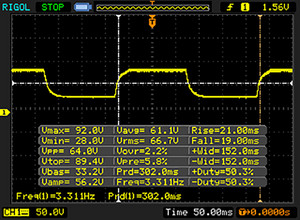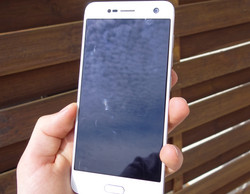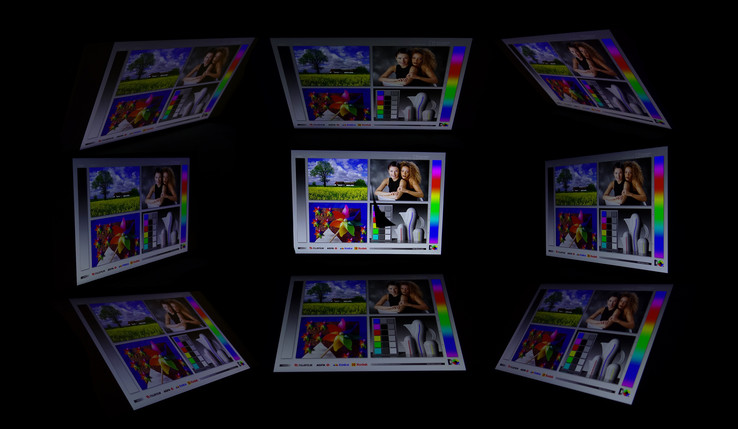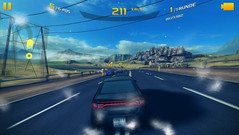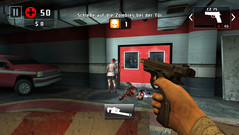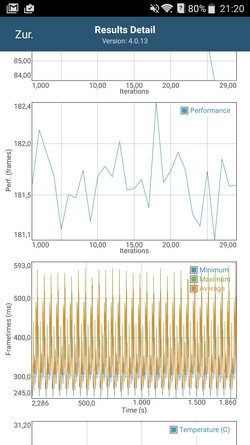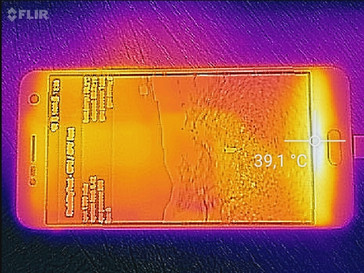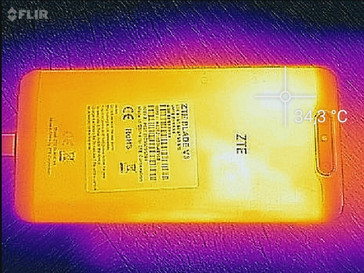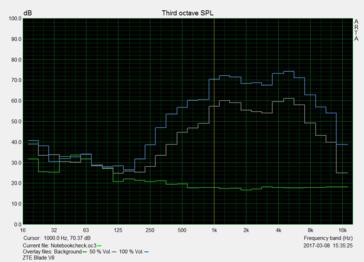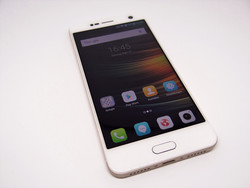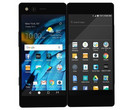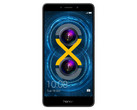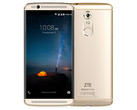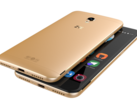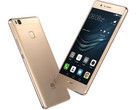ZTE Blade V8 Smartphone Review
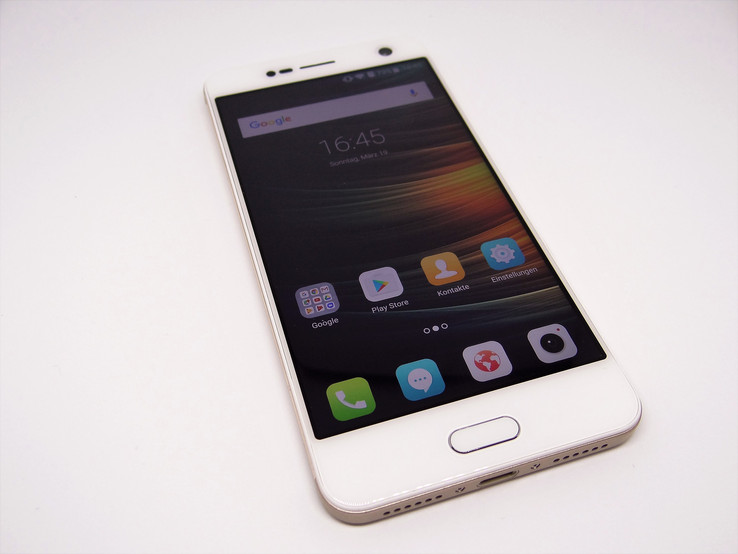
ZTE has created the successor to the Blade V7 with its Blade V8. Modifications have been made compared with the predecessor. For example, the front-facing camera′s resolution has been increased, it now has a stronger battery, and the internal storage has been expanded from 16 to 32 GB. The dual-primary camera is particularly interesting as it allows shooting Bokeh photos, i.e. photos with different levels of focus that can be edited in the final photo. Furthermore, ZTE has equipped the Blade V8 with an audio chip that supports Dolby sound.
At its current shop price of 269 Euros (~$291), the V8 is situated in the lower mid-range sector. There are quite a lot of devices to choose from since this sector is highly competitive. Huawei's P9 Lite, Honor's 6X, ZTE's Axon 7 Mini, and ZTE's Blade V7 due to its similar design will be used for reference in this test.
Case
The casing of the V8 is a combination of glass and aluminum. ZTE has not been tight-fisted with materials despite the relatively low price. The design has not been modified greatly compared with the predecessor. The available colors, gold and gray, are also the same. The V8′s screen diagonal of 5.2-inches, a resolution of 1920x1080, and pixel density of 424 PPI are also identical. The narrow bezels have also been adopted, but its dimensions have increased slightly. This results in a higher weight of now 142 grams rather than 136 grams. The comparison devices Axon 7 Mini and the cheaper Honor 6X also have aluminum casings, but the P9 Lite has only been given an aluminum bezel.
The V8 has an appealing and pleasant feel. The brushed aluminum has a pleasantly roughened finish. It is pleasant to hold thanks to the slightly rounded back and the beveled edges. However, the smartphone can be placed on an even surface without rocking annoyingly. The dual-camera′s bezel could be a reason for this as it is situated in the device′s top center. The V8 makes an overall stable and high-quality impression. It is not possible to twist the casing and cracking or other noises that point to instability are not audible.
The V8 has an almost impeccable build for a smartphone from this price range. The gaps are even, and we did not find any rough corners or edges in the test. Only the power button and volume control are a bit loose in their recesses. Although this is not tragic, it ruins the otherwise good overall impression. A modification is found on the underside. ZTE has installed an analog button instead of an integrated button. This was necessary for incorporating the fingerprint scanner. The back button and application manager are still implemented as touch buttons and can only be felt. The home button fits tight in the casing without play and largely compensates for the loose power button and volume control.
The micro-USB for charging and the speaker are both situated on the lower edge. The 3.5-mm jack is found on the upper edge. The left side houses the slot for either two nano-SIM cards or an optional micro-SD card.
Connectivity
A Snapdragon 435 octa-core CPU by Qualcomm operates inside the aluminum casing. It clocks at a maximum of 1.40 GHz. An Adreno 505 GPU from the lower mid-range is integrated into it. Apps and data are stored in the 32-GB internal storage, of which approximately 23 GB is available. If this is not enough storage, the user can expand it by up to 128 GB according to the manufacturer. Apps can be moved to the micro-SD card.
The V8 sports the standard configuration of interfaces. A second-generation micro-USB port is found on the lower edge, the jack for the included headset or another headphone is on the upper edge. ZTE has made cutbacks in the Blade V8′s connectivity. For example, Miracast is now absent. NFC would also have been a nice feature considering that the smartphone very obviously comes with a good configuration. Instead, it is possible to use the smartphone as a webcam with a PC via USB. The smartphone simply has to be connected to the PC in the settings and camera PTP has to be selected for this. It is also too bad that there are no settings for the installed status LED. It can only be changed directly in apps, such as WhatsApp.
Software
The Blade V8 uses Google′s Android version 7.0 Nougat operating system. ZTE covers it with its own MiFavor user interface in version 4.2. The biggest difference of this interface is that it does not use an app drawer, i.e. an extra app viewer. MiFavor also offers some setting options to customize the system′s appearance. Diverse security features are installed. For example, the user can unlock the handset when approaching their home or set up voice recognition via Smart Lock. The Blade V8′s software should allow fast and logical work. Consequently, quick accesses and search functions that can be found and used intuitively are embedded. Settings are also found quickly and the menus are clearly arranged.
Communication and GPS
The Blade V8 utilizes the b/g/n Wi-Fi standards. Pages open completely within a few seconds in the browser. Downloading apps is just as fast. We did not experience any connection interruptions during our regular handling. The speeds of 54.4 Mbit/s in receive and 54.9 Mbit/s in transmit are in a good midfield. In contrast to the Axon 7 Mini, the V8 is faster and the Honor 6X is a bit better in transmit. The connection remains stable as long as the user is on the same story as the router. The connection quality decreases when moving to another story. The Blade V8 can also use a bandwidth of 2/3 and 4G up to LTE Cat.6. According to the manufacturer, browsing speeds of 300 Mbit/s in download and 50 Mbit/s in upload are possible.
| Networking | |
| iperf3 transmit AX12 | |
| Honor 6X | |
| ZTE Axon 7 Mini | |
| ZTE Blade V8 | |
| iperf3 receive AX12 | |
| Honor 6X | |
| ZTE Blade V8 | |
| ZTE Axon 7 Mini | |
The GPS module can gladly be called a good compromise as it offers a decent solution for occasional navigating. The comparison screenshots with Garmin′s Edge 500 navigation system show that the GPS module tends to cut out some parts of the route and that it takes corners more sharply. Other devices by ZTE appear to have the same problems. The Axon 7 Mini, for example, displays the same behavior. Only the P9 Lite does a better job, while the 6X deviates even more strongly than the V8 from the ideal route. In fact, the GPS test proves that the Blade V8′s accuracy can deviate by approximately 5 to 6 meters outdoors regardless of the available connections.
Telephony and Call Quality
The phone app is kept plain and simple. The keypad is on the start page. It is plain to see that the keys are not separated clearly, and thus the user should pay attention to what numbers are being entered while dialing. The symbol beside the green phone allows directly switching to messages. There are two other tabs for quickly accessing contacts and for organizing contacts into dedicated groups in order to, for example, allocate contacts and make editing easier. The phone app also offers a feature for hearing-impaired users, assigning quick accesses to specified contacts, and many options for customizing caller settings.
Reception is good and we did not experience any significant problems during calls. The V8 benefits from its powerful speakers in hands-free mode. Speech is not distorted but rather transmitted clearly. If at all, only users with big ears should use the included headset. ZTE does not use rubber in-ear plugs. The earpieces are made of hard plastic and thus the plugs do not adapt to the ear's shape. Here, third-party products should be used.
Cameras
The cameras belong to the highlights of the Blade V8. In total, ZTE has installed two 13-megapixel cameras - both on the front and on the rear. This is not at all a matter of course, and they allow shooting razor-sharp photos. The primary camera has a resolution of 4160x3120 pixels in the 4:3 format and, in addition to an autofocus, a 2-megapixel camera supports it. Thus, the V8 has a dual-camera that allows taking Bokeh photos and stereoscopic 3D photos. Bokeh means that the focus in a picture can be shifted afterward and nice effects can be produced in the looks. 3D in the V8 means that two pictures taken from different angles can be placed beside each other. A three-dimensional impression is produced with the right tools.
Both cameras record videos in a maximum of 1920x1080 at 30 frames per second. The primary camera also offers the option of recording in 1280x720 pixels (HD) at 60 FPS, and thus creating quite decent slow-motion recordings. This is achieved in favor of details. Eight modes exist for presetting photos and videos. The Blade V8 also supports HDR, a self-timer, a digital image stabilizer for videos, and additional settings in the colors.
The bottom line is basically this: The V8 shoots great photos with high contrast and true colors. Blurriness and artifacts only become visible especially on the outlines of objects. The photos become noisy when its gets darker and the particles in the photo become visible. Thus, the V8 is midfield among the comparison devices. Of course, the V8 cannot compete with good system or reflex cameras or cutting-edge flagships, but the photos have a good quality for a mid-range smartphone. Furthermore, all settings can be selected freely in manual mode. They are not found immediately since the mode is placed rather inconspicuously at the upper edge in the presets.
It becomes evident that the Blade V8 tends to reproduce colors a bit more intensively than in real life when looking closer at the ColorChecker reference (photographed under defined light conditions). This is not a drawback as the photos of the V8 gain in intensity and brightness. Seen in total, the photos are sharp and outlines are good. However, blurriness and hazy details are seen in higher zoom levels. They also appear when it is getting darker, though.
Accessories and Warranty
The accessories are comprised of the charging/data cable and the charging adapter, a headset, a warranty card, and a quick-start guide. The manufacturer's warranty period is two years. Please see our Guarantees, Return policies and Warranties FAQ for country-specific information.
Additional gadgets made for the handset are not sold, at least not in Germany. The headset presents a problem at least subjectively. Voice sounds good with them, which is important in telephony, but the earplugs are too big and can only be adapted to the ear with difficulty.
Input Devices and Handling
ZTE uses Google's stock keyboard as the primary input interface. The keys' arrangement allows finding them quickly, and they are big enough to prevent frequent typos. In total, it is a keyboard that is pleasing to use. ZTE does not treat the V8 to its own voice control. Instead, it is possible to use the search feature that Google provides for voice inputs. A window that displays Google-relevant information opens via prolonged pressure on the home button. The symbol for voice input is situated at the upper edge.
The touchscreen allows for smooth workflow. Rarely does the finger "stick" to the screen, i.e. the short-lived feeling of being stopped during its use. This phenomenon appears when scrolling through long menus and swiping over the same place. However, this phenomenon can be explained with moist fingers and the skin's thin, oily layer. Auto-rotate needs a moment before it detects a change in position. This delay is shorter the slower the handset is rotated, but it is still noticed. The fingerprint scanner is very fast and accurate. The fingerprint is identified reliably even when placing the finger slightly slanted on the scanner. The V8 can only be unlocked via the usual methods, i.e. PIN, password, and pattern. Due to the absence of a dedicated voice control, the Blade V8 cannot be unlocked via a voice command.
Display
ZTE uses a glossy, 16:9 Full HD IPS panel for its Blade V8. A pixel density of 424 PPI is the result on the 5.2-inch size with 1920x1080 pixels. This places the handset in the midfield in the comparison. The reproduction is very sharp. This, in conjunction with a maximum brightness of 496 Candela per square meter, leads to a very good brightness that even makes outdoor use in the shade possible.
The screen's illumination could be a bit more homogeneous in total. This decrease is sometimes visible when looking very closely, and the screen's upper right corner seems to be darker than the rest. However, this is not annoying during use.
| |||||||||||||||||||||||||
Brightness Distribution: 79 %
Center on Battery: 482 cd/m²
Contrast: 753:1 (Black: 0.64 cd/m²)
ΔE ColorChecker Calman: 4 | ∀{0.5-29.43 Ø4.78}
ΔE Greyscale Calman: 3.4 | ∀{0.09-98 Ø5}
Gamma: 2.13
CCT: 6774 K
| ZTE Blade V8 IPS, 1920x1080, 5.2" | Huawei P9 Lite IPS, 1920x1080, 5.2" | Honor 6X IPS, 1920x1080, 5.5" | ZTE Axon 7 Mini AMOLED, 1920x1080, 5.2" | ZTE Blade V7 IPS, 1920x1080, 5.2" | |
|---|---|---|---|---|---|
| Screen | -5% | -7% | -47% | -58% | |
| Brightness middle (cd/m²) | 482 | 505 5% | 547 13% | 327 -32% | 409 -15% |
| Brightness (cd/m²) | 448 | 468 4% | 540 21% | 335 -25% | 411 -8% |
| Brightness Distribution (%) | 79 | 88 11% | 94 19% | 94 19% | 96 22% |
| Black Level * (cd/m²) | 0.64 | 0.74 -16% | 0.57 11% | 0.38 41% | |
| Contrast (:1) | 753 | 682 -9% | 960 27% | 1076 43% | |
| Colorchecker dE 2000 * | 4 | 4.1 -3% | 5.1 -28% | 6.3 -58% | 9.4 -135% |
| Colorchecker dE 2000 max. * | 6.5 | 5.8 11% | 9.1 -40% | 11.4 -75% | 17.6 -171% |
| Greyscale dE 2000 * | 3.4 | 4.9 -44% | 6.2 -82% | 7.1 -109% | 11.6 -241% |
| Gamma | 2.13 103% | 2.5 88% | 2.09 105% | 2.25 98% | 2.25 98% |
| CCT | 6774 96% | 7116 91% | 6546 99% | 7637 85% | 9597 68% |
* ... smaller is better
Screen Flickering / PWM (Pulse-Width Modulation)
| Screen flickering / PWM detected | 5435 Hz | ≤ 1 % brightness setting | |
The display backlight flickers at 5435 Hz (worst case, e.g., utilizing PWM) Flickering detected at a brightness setting of 1 % and below. There should be no flickering or PWM above this brightness setting. The frequency of 5435 Hz is quite high, so most users sensitive to PWM should not notice any flickering. In comparison: 53 % of all tested devices do not use PWM to dim the display. If PWM was detected, an average of 8111 (minimum: 5 - maximum: 343500) Hz was measured. | |||
The IPS screen displays images with high color accuracy, which is owed to the implemented technology and comparatively high brightness. With a black level of 0.64 cd/m², the V8 produces decent black and gray tones without being above average. For example, dark colors in videos look saturated. Nevertheless, the V8 tends to display black more grayish than a rich black. In the brightness comparison, the V8 surpasses the P9 Lite and Axon 7 Mini, but it lags behind the 6X. A positive aspect of the Blade V8 is that a perceptible PWM-flickering first appears at a brightness of 1% - and flickering is not noticed at this point.
Display Response Times
| ↔ Response Time Black to White | ||
|---|---|---|
| 22.8 ms ... rise ↗ and fall ↘ combined | ↗ 10.4 ms rise | |
| ↘ 12.4 ms fall | ||
| The screen shows good response rates in our tests, but may be too slow for competitive gamers. In comparison, all tested devices range from 0.1 (minimum) to 240 (maximum) ms. » 50 % of all devices are better. This means that the measured response time is worse than the average of all tested devices (20.2 ms). | ||
| ↔ Response Time 50% Grey to 80% Grey | ||
| 40 ms ... rise ↗ and fall ↘ combined | ↗ 21 ms rise | |
| ↘ 19 ms fall | ||
| The screen shows slow response rates in our tests and will be unsatisfactory for gamers. In comparison, all tested devices range from 0.165 (minimum) to 636 (maximum) ms. » 60 % of all devices are better. This means that the measured response time is worse than the average of all tested devices (31.6 ms). | ||
The screen in the Blade V8 allows indoor and outdoor use. The brightness is absolutely sufficient for outdoor use, but the handset should not be exposed to direct sunlight. Content can only be recognized with difficulty if at all in direct sunlight. It is possible to leave brightness control up to the ambient light sensor. It adapts the screen's brightness according to the ambient light.
Thanks to the underlying IPS technology, the viewing-angle stability is relatively high. However, only up to a certain point. At a shifted view of 45 °, colors start fading and darken slightly although content is still well-legible. This is not a problem as such extreme viewing angles are rarely used in everyday handling.
Performance
The Snapdragon 435 octa-core processor by Qualcomm operates under the Blade V8's hood. Thus, ZTE installs a mid-range CPU with enough computing power in its basic architecture to deal with all routine scenarios. The Snapdragon 435 operates in two clusters. The performance has been grouped into four cores in each cluster. One group clocks at 1.4 GHz and the other at 1.1 GHz in the 64-bit ARM Cortex A53 architecture. 3 GB of working memory and a mid-range Adreno 505 round off the package. Expressed in figures, the Blade V8 scores average to good in almost all benchmarks. Although its scores usually lag behind the comparison devices by a few points, they are furnished with somewhat stronger hardware in comparison. However, a performance gain of averagely 15% can be observed compared with the Blade V7.
This image is also reflected in the Chrome browser and internal storage benchmarks. The rivals sometimes have a lead. However, the work performance is good subjectively. Practical tests prove that the V8 can deal with 3D applications, such as games. The performance and multitasking largely function without problems, and short lags are rare and only appear during extremely high performance demand. Switching among applications is also performed without dropouts. The programs continue where they were closed.
| AnTuTu v6 - Total Score (sort by value) | |
| ZTE Blade V8 | |
| Huawei P9 Lite | |
| Honor 6X | |
| ZTE Axon 7 Mini | |
| ZTE Blade V7 | |
| Wiko U Feel Prime | |
| Geekbench 4.0 | |
| 64 Bit Single-Core Score (sort by value) | |
| ZTE Blade V8 | |
| Honor 6X | |
| ZTE Axon 7 Mini | |
| Wiko U Feel Prime | |
| 64 Bit Multi-Core Score (sort by value) | |
| ZTE Blade V8 | |
| Honor 6X | |
| ZTE Axon 7 Mini | |
| Wiko U Feel Prime | |
| GFXBench (DX / GLBenchmark) 2.7 | |
| T-Rex Onscreen (sort by value) | |
| ZTE Blade V8 | |
| Huawei P9 Lite | |
| Honor 6X | |
| ZTE Axon 7 Mini | |
| ZTE Blade V7 | |
| Wiko U Feel Prime | |
| 1920x1080 T-Rex Offscreen (sort by value) | |
| ZTE Blade V8 | |
| Huawei P9 Lite | |
| Honor 6X | |
| ZTE Axon 7 Mini | |
| ZTE Blade V7 | |
| Wiko U Feel Prime | |
| GFXBench 3.0 | |
| on screen Manhattan Onscreen OGL (sort by value) | |
| ZTE Blade V8 | |
| Huawei P9 Lite | |
| Honor 6X | |
| ZTE Axon 7 Mini | |
| ZTE Blade V7 | |
| Wiko U Feel Prime | |
| 1920x1080 1080p Manhattan Offscreen (sort by value) | |
| ZTE Blade V8 | |
| Huawei P9 Lite | |
| Honor 6X | |
| ZTE Axon 7 Mini | |
| ZTE Blade V7 | |
| Wiko U Feel Prime | |
| GFXBench 3.1 | |
| on screen Manhattan ES 3.1 Onscreen (sort by value) | |
| ZTE Blade V8 | |
| Huawei P9 Lite | |
| Honor 6X | |
| ZTE Axon 7 Mini | |
| ZTE Blade V7 | |
| Wiko U Feel Prime | |
| 1920x1080 Manhattan ES 3.1 Offscreen (sort by value) | |
| ZTE Blade V8 | |
| Huawei P9 Lite | |
| Honor 6X | |
| ZTE Axon 7 Mini | |
| ZTE Blade V7 | |
| Wiko U Feel Prime | |
| PCMark for Android - Work performance score (sort by value) | |
| ZTE Blade V8 | |
| Huawei P9 Lite | |
| Honor 6X | |
| ZTE Axon 7 Mini | |
| ZTE Blade V7 | |
| Wiko U Feel Prime | |
The outcomes can almost be transferred without change to the browser benchmarks in terms of pure performance. The test with Google's Chrome browser shows that the V8 is sooner situated in the lower performance sector. In the test with Jetstream 1.1, all devices outrun the V8. The same is seen in Octane and WebXPRT. The V8 only achieves a very good placing in the Mozilla Kraken test. Unfortunately, we do not have any figures for comparison here, but the performance is decent when using the proprietary browser. Consequently, at least the V8's browsing performance is extremely dependent on the used platform.
| JetStream 1.1 - Total Score | |
| Huawei P9 Lite | |
| Honor 6X | |
| ZTE Axon 7 Mini | |
| Wiko U Feel Prime | |
| ZTE Blade V7 | |
| ZTE Blade V8 | |
| Mozilla Kraken 1.1 - Total | |
| ZTE Blade V7 | |
| ZTE Blade V8 | |
| ZTE Axon 7 Mini | |
| Wiko U Feel Prime | |
| Huawei P9 Lite | |
| Honor 6X | |
| Octane V2 - Total Score | |
| Huawei P9 Lite | |
| Honor 6X | |
| Wiko U Feel Prime | |
| ZTE Axon 7 Mini | |
| ZTE Blade V8 | |
| ZTE Blade V7 | |
| WebXPRT 2015 - Overall | |
| Honor 6X | |
| Huawei P9 Lite | |
| ZTE Axon 7 Mini | |
| ZTE Blade V8 | |
* ... smaller is better
The storage has been selected well in the big comparison. Only the 6X defeats the V8 in a direct comparison. An average performance gain of 47% is achieved over the V7. The storage rates are not great seen on the whole, but the V8 is still a mid-range smartphone and its rates are very good for this category. They present a performance that is reflected in the subjective handling. Data is written quickly on both the internal storage and micro-SD card and are read just as fast.
| ZTE Blade V8 | Huawei P9 Lite | Honor 6X | ZTE Axon 7 Mini | ZTE Blade V7 | Wiko U Feel Prime | |
|---|---|---|---|---|---|---|
| AndroBench 3-5 | -22% | 24% | -23% | -47% | -5% | |
| Sequential Read 256KB (MB/s) | 278.1 | 283.5 2% | 283.4 2% | 230.8 -17% | 196.8 -29% | 270.9 -3% |
| Sequential Write 256KB (MB/s) | 77.7 | 46.24 -40% | 73.8 -5% | 122.8 58% | 39.45 -49% | 137.3 77% |
| Random Read 4KB (MB/s) | 39.89 | 38.22 -4% | 39.55 -1% | 14.05 -65% | 28.07 -30% | 55 38% |
| Random Write 4KB (MB/s) | 12.69 | 15.35 21% | 45.05 255% | 6.7 -47% | 7.58 -40% | 9.4 -26% |
| Sequential Read 256KB SDCard (MB/s) | 96.5 | 60.8 -37% | 52 -46% | 73.9 -23% | 43.67 -55% | 41.98 -56% |
| Sequential Write 256KB SDCard (MB/s) | 87.1 | 25.1 -71% | 34.53 -60% | 50.3 -42% | 20.89 -76% | 35.21 -60% |
Games
The Adreno 505 is a mid-range graphics solution. It supports OpenGL ES 3.2, making it gaming suitable. 3D games, such as Asphalt 8 or Dead Trigger 2 run quite well. Asphalt 8 settles to 19 FPS on average. An average of up to 29 FPS is reached when playing, but this rate cannot be kept stably. The V8 manages Dead Trigger 2 at almost a constant 30 FPS, but its graphics requirements are much lower than in Asphalt 8. Games without high graphics requirements, such as Clash of Clans, run smoothly at 60 FPS. The FPS rates were determined using GameBench.
The position sensor and accelerometer quickly detect whether and how the handset is moved. Inputs on the touchscreen were implemented directly even during demanding games. The functionality during gaming cannot be criticized. A minor "issue": A hand could quickly cover the speaker and muffle the sound when playing a game.
| Asphalt 8: Airborne | |||
| Settings | Value | ||
| high | 19 fps | ||
| Dead Trigger 2 | |||
| Settings | Value | ||
| high | 30 fps | ||
Emissions
Temperature
The temperatures are not a big issue during normal use. The smartphone only heats up moderately. This is barely noticed and is not unpleasant, either. It gets a bit warmer when performance-driven software is used. The temperature climbs slightly. However, handling does not get unpleasant then, but it is sometimes felt through clothing when used on the lap. The V8 cools down again quite quickly after use. The performance during permanent load is measured in the GFXBench test (Manhattan Battery Test). It becomes evident that the temperature remains above 31.2 °C, but the performance is relatively stable. Thus, the temperature only has a minor impact on the V8's behavior during permanent load.
(+) The maximum temperature on the upper side is 36.5 °C / 98 F, compared to the average of 35.2 °C / 95 F, ranging from 21.9 to 247 °C for the class Smartphone.
(+) The bottom heats up to a maximum of 33.3 °C / 92 F, compared to the average of 34 °C / 93 F
(+) In idle usage, the average temperature for the upper side is 31.5 °C / 89 F, compared to the device average of 32.9 °C / 91 F.
Speaker
The main speaker on the lower edge sounds quite decent for this price range. It does not produce any static noise even at full volume and the sound does not distort. The high and mid tones sound good, but low tones are completely absent. When playing songs, it can sometimes happen that the vocals are slightly subdued and the music becomes too dominant. A pleasing feature is the Dolby audio support. It is enabled with the corresponding button in the second status row. The volume increases in all areas. This naturally cannot be compared with, for example, Bluetooth speakers, but it is compared and sounds very good for a smartphone. ZTE proves to be progressive here.
ZTE Blade V8 audio analysis
(±) | speaker loudness is average but good (81.8 dB)
Bass 100 - 315 Hz
(-) | nearly no bass - on average 26.9% lower than median
(±) | linearity of bass is average (9% delta to prev. frequency)
Mids 400 - 2000 Hz
(±) | higher mids - on average 6.5% higher than median
(±) | linearity of mids is average (8.7% delta to prev. frequency)
Highs 2 - 16 kHz
(±) | higher highs - on average 8.5% higher than median
(±) | linearity of highs is average (8.7% delta to prev. frequency)
Overall 100 - 16.000 Hz
(-) | overall sound is not linear (31.7% difference to median)
Compared to same class
» 81% of all tested devices in this class were better, 2% similar, 16% worse
» The best had a delta of 11%, average was 35%, worst was 134%
Compared to all devices tested
» 90% of all tested devices were better, 2% similar, 8% worse
» The best had a delta of 4%, average was 24%, worst was 134%
Huawei P9 Lite audio analysis
(+) | speakers can play relatively loud (88.4 dB)
Bass 100 - 315 Hz
(-) | nearly no bass - on average 31% lower than median
(±) | linearity of bass is average (9.2% delta to prev. frequency)
Mids 400 - 2000 Hz
(+) | balanced mids - only 4.4% away from median
(+) | mids are linear (4.2% delta to prev. frequency)
Highs 2 - 16 kHz
(±) | higher highs - on average 5.2% higher than median
(+) | highs are linear (2.2% delta to prev. frequency)
Overall 100 - 16.000 Hz
(±) | linearity of overall sound is average (21% difference to median)
Compared to same class
» 38% of all tested devices in this class were better, 8% similar, 54% worse
» The best had a delta of 11%, average was 35%, worst was 134%
Compared to all devices tested
» 57% of all tested devices were better, 7% similar, 36% worse
» The best had a delta of 4%, average was 24%, worst was 134%
Honor 6X audio analysis
(±) | speaker loudness is average but good (81.9 dB)
Bass 100 - 315 Hz
(-) | nearly no bass - on average 21.7% lower than median
(±) | linearity of bass is average (10.2% delta to prev. frequency)
Mids 400 - 2000 Hz
(±) | higher mids - on average 8.4% higher than median
(±) | linearity of mids is average (7.8% delta to prev. frequency)
Highs 2 - 16 kHz
(±) | higher highs - on average 6.7% higher than median
(+) | highs are linear (5.8% delta to prev. frequency)
Overall 100 - 16.000 Hz
(±) | linearity of overall sound is average (29.1% difference to median)
Compared to same class
» 76% of all tested devices in this class were better, 3% similar, 21% worse
» The best had a delta of 11%, average was 35%, worst was 134%
Compared to all devices tested
» 87% of all tested devices were better, 2% similar, 11% worse
» The best had a delta of 4%, average was 24%, worst was 134%
Frequency diagram in comparison (checkboxes above can be turned on/off!)
Energy Management
Power Consumption
The Blade V8 presents average consumption rates as long as it is not loaded. The V8 barely consumes power on average, but the energy requirement climbs during full load. Although 5.62 watts does not sound like much, considering that the V8 is based on economical components, the consumption is relatively high.
The manufacturer does not give the V8 a quick-charge function. The V8 needs almost 2 hours (1:55 h) for fully recharging with the included power supply.
| Off / Standby | |
| Idle | |
| Load |
|
Key:
min: | |
Battery Runtime
Compared with the Blade V7, the battery has grown by 190 to a total of 2730 milli-ampere hours, which should provide a longer battery life. The battery cannot be removed, and consequently the user cannot replace it.
The Blade V8 presents an outstanding battery life of 4:50 hours in the stress test via the Stability Test app with maximum load, i.e. Wi-Fi, Bluetooth, GPS, etc. enabled and maximum screen brightness. The V8 outruns the P9 Lite and the bigger Axon 7 Mini with this rate. However, Honor's 6X achieves a 1:30-hour longer runtime. The Blade V8 manages just over 9 hours in the Big Buck Bunny video loop. It can be said that the V8 is one of the better devices in this category. However, both the P9 Lite and 6X present longer runtimes. Only the Axon 7 Mini achieves shorter runtimes. The rates are still sufficient for managing a workday.
| ZTE Blade V8 2730 mAh | Huawei P9 Lite 3000 mAh | Honor 6X 3340 mAh | ZTE Axon 7 Mini 2705 mAh | ZTE Blade V7 2540 mAh | |
|---|---|---|---|---|---|
| Battery runtime | 6% | 65% | -16% | -26% | |
| Reader / Idle (h) | 16.1 | 23.4 45% | 37.5 133% | 21.5 34% | |
| H.264 (h) | 9.1 | 9.5 4% | 14.8 63% | 7.3 -20% | |
| WiFi v1.3 (h) | 11.7 | 10.1 -14% | 16 37% | 6.7 -43% | 8.7 -26% |
| Load (h) | 5 | 4.5 -10% | 6.3 26% | 3.3 -34% |
Pros
Cons
Verdict
At the end of this test, the question about for whom this handset is suitable arises. Primarily for bargain-hunters who want a lot of features for little money. These buyers get a dual-camera and a 13-megapixel front-facing camera. Dolby Audio support is available for the speakers. A decent battery life, good screen, and storage expansion via micro-SD also belongs to the total package.
The Blade V8 is a smartphone that brings good performance to the mid-range at a low price.
And the bad? Buyers should be aware that this is not a premium smartphone despite the aluminum casing. The present configuration is solid average, but not any more than that. A more expensive model should be taken if more power and a better configuration are wanted. The mediocre performance rates in the performance comparison are actually the biggest point of criticism. Unfortunately, the speakers are very weak without Dolby Audio, and this results in the lack of volume. The camera presents visible weaknesses in low-light situations.
ZTE Blade V8
- 03/29/2017 v6 (old)
Niklas Böhm




